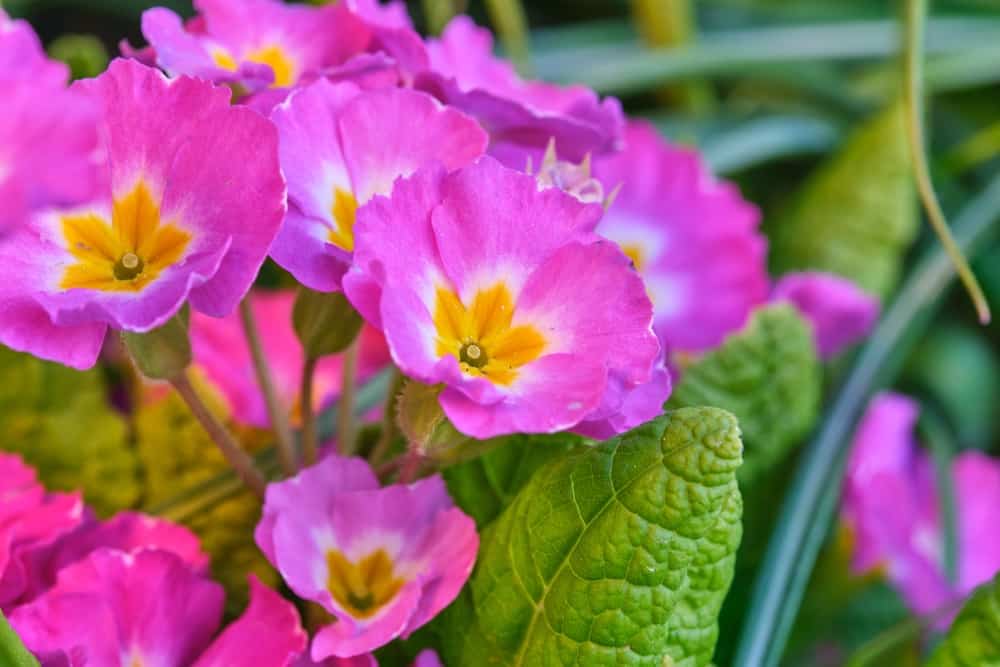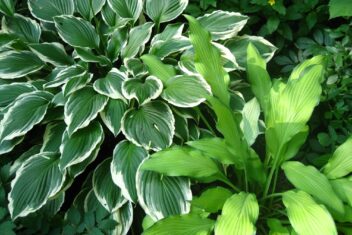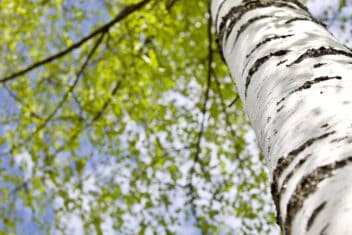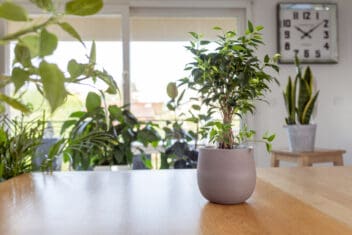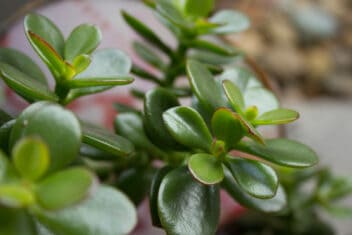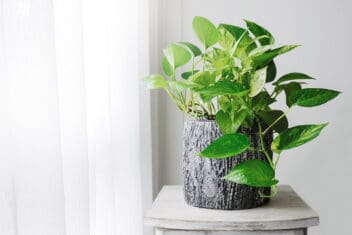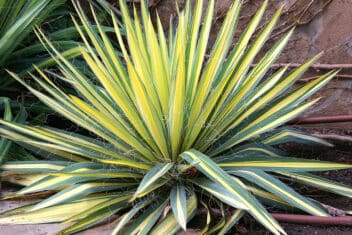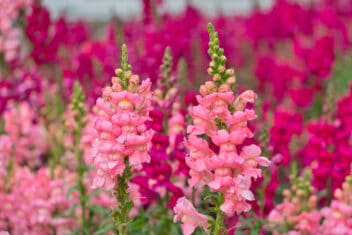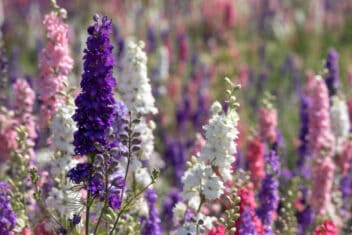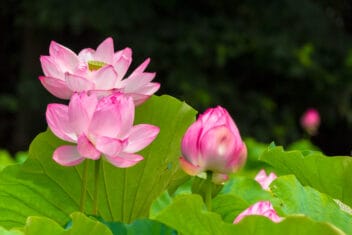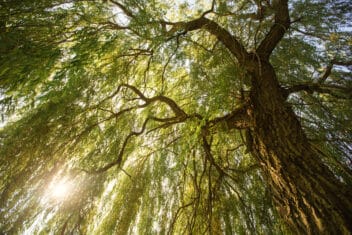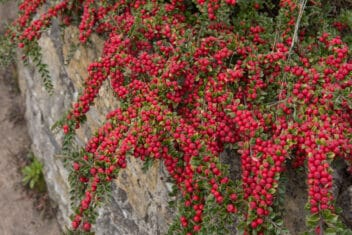Few plants bloom as early as primroses do. By early spring, they’re alive with bright colors. They’re attractive, compact plants you can plant in borders, containers, partially shaded gardens, and in mass groupings.
The sheer variety is astounding. Some have clusters of flowers on one stem, while others have a single flower on the stem. They vary wildly in foliage and size, as well as color.
Primroses are versatile, easy-going flowers that add long-lasting style and color to your garden. Ready to learn more?
What is Primrose?
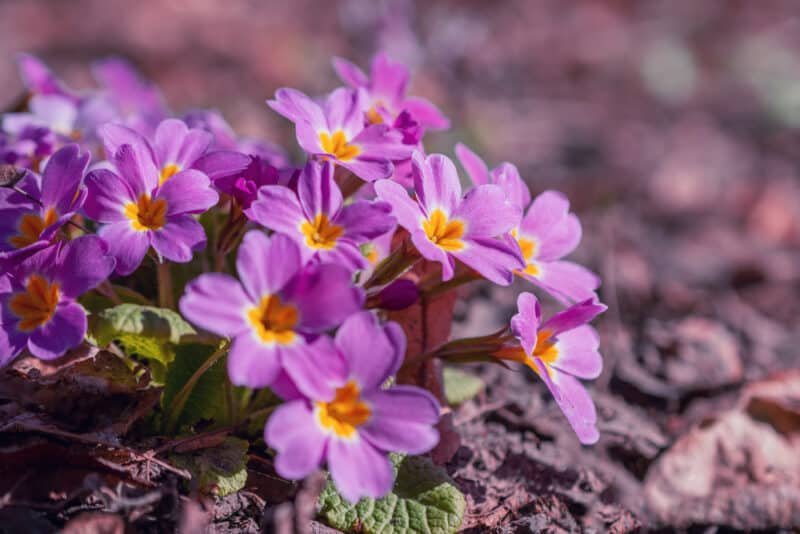
The Primula genus has around 500 species and a vast number of hybrids. They’re all generally short-lived perennials that are also sometimes called cowslip.
Primrose is indigenous to temperate and tropical regions in the Northern Hemisphere. Species grow in North and South America, Europe, and Asia, with over half hailing from the Himalayan region.
Primula species have been cultivated and hybridized for centuries, so the options are nearly endless when it comes to size, color, and leaf shape.
It’s important to note, primroses from the Primula genus are not the same as evening primrose (Oenothera biennis), which is toxic to humans and pets. Don’t be confused with all the names. Look for Primula on the label if you’re purchasing a plant.
6 Species and Hybrids That Are Perfect for Your Garden
As we mentioned, there are over 500 species and hundreds of cultivars in the Primula genus. You could plant a different kind every month and never get through them all. So look for new options by checking out local nurseries for fun surprises.
Japanese Primrose

Japanese primrose (P. japonica) comes in hues shades of white, pink, and red and thrives in partial shade. Plant this species around water features, since it loves moist environments. It will grow up to two feet tall and is hardy in USDA Hardiness Zones 4 to 8.
Polyanthus Primrose
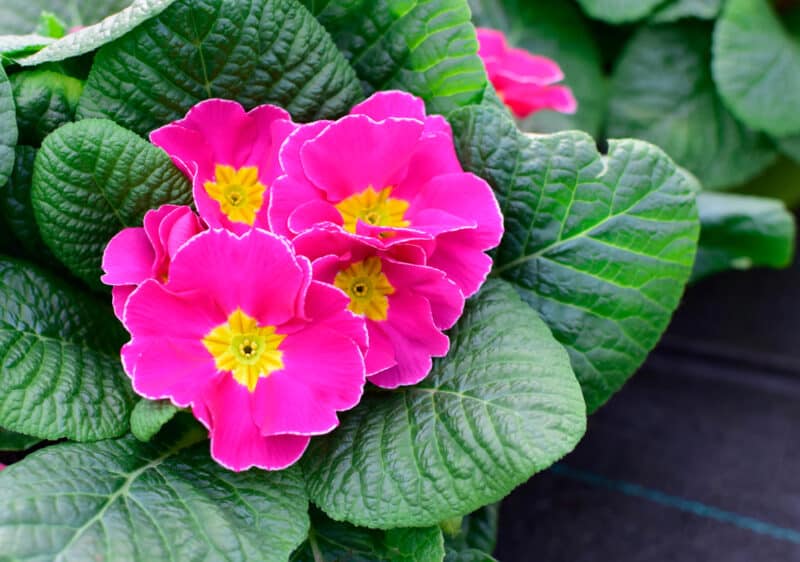
This is an extremely popular modern hybrid (P. x polyantha). If you buy primrose from a garden center, it’s likely this is what you will find. They are hardy perennials in Zones 3 to 7, but outside of these areas, they can be grown as annuals.
Common Primrose
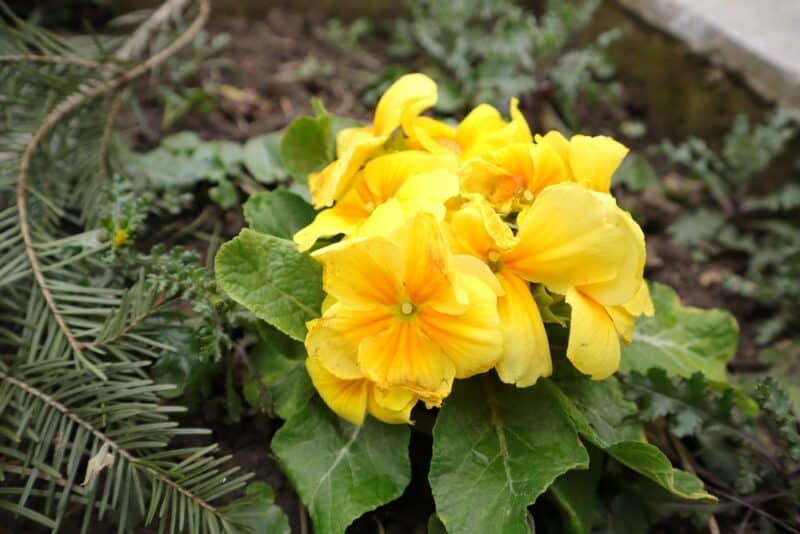
Common primrose (P. vulgaris) hails from Europe but has naturalized in parts of North America. It is a parent plant of many of the cultivated hybrids on the market.
Although not a common plant in North American gardens, it grows well in Zones 4 to 8, so if you can get it, it’s well worth the effort.
Cowslip
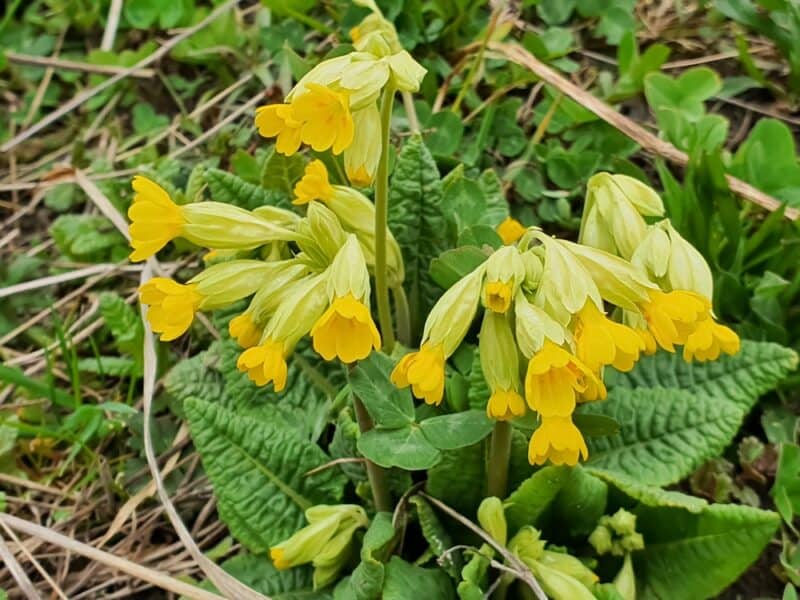
Another native to Europe and Asia, P. veris has naturalized throughout the northeastern United States. It does well in Zones 3 to 8, so it can be grown just about anywhere in the US.
Drumstick Primrose
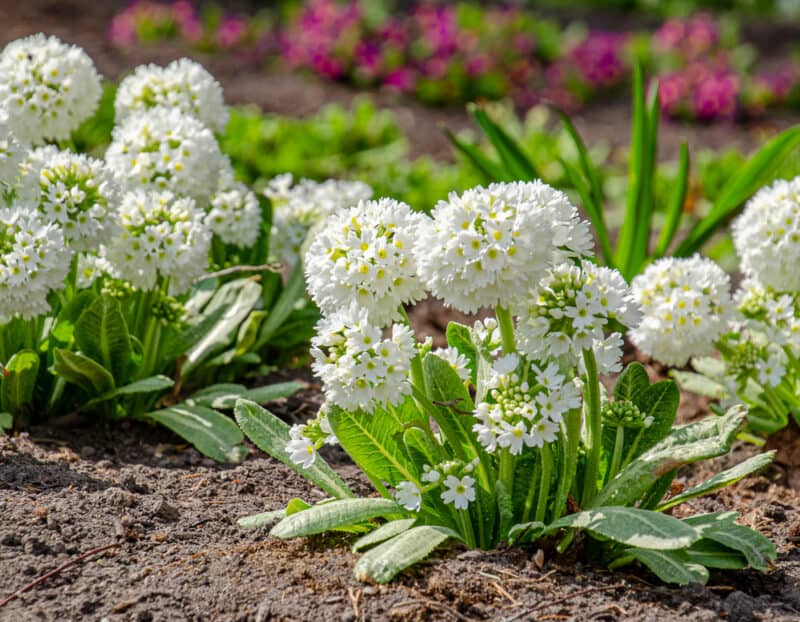
Drumstick primrose (P. denticulata) is native to the Himalayas. It grows a foot high on sturdy, upright stems topped with round inflorescences that give them a resemblance to drumsticks.
This species is hardy in Zones 2 to 8, so even those with extremely frigid winters can enjoy it.
Hardy Primrose
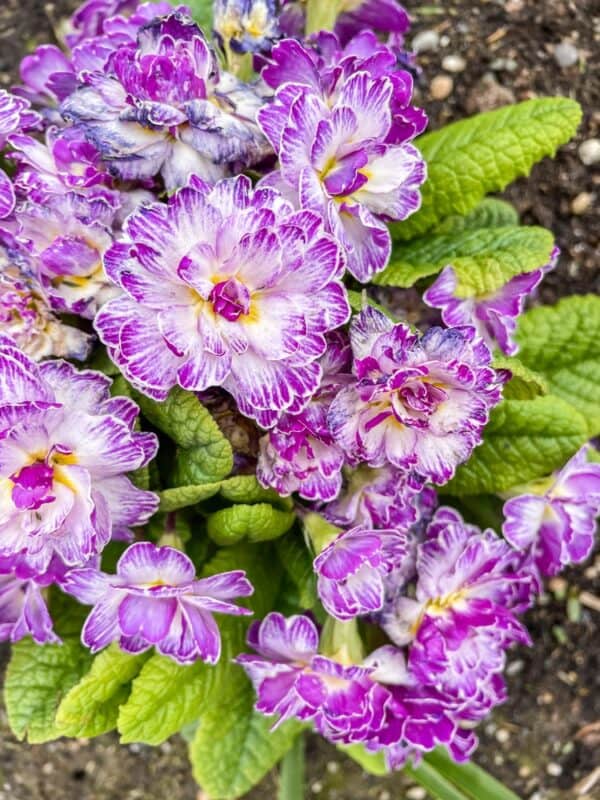
Lovely pink flowers bloom on this species (P. kisoana), which is hardy in Zones 4 to 8. This species is covered in mauve and rose-colored flowers from April to May. It tolerates full shade, so it’s perfect for those who need to fill shady spots.
Propagating Primroses
Primroses spread by seed and spreading rhizomes, which gives us a leg up on propagating them. They’re eager to spread around in your garden, you just need to give them a helping hand.
Division
This is a straightforward process, as long as you do it after the primrose plant has flowered.
- Gently dig and lift the whole plant from the ground. Use a broad shovel to lift both the plant and some of the surrounding soil.
- Divide the plant in half with a spade or sharp knife.
- Replant each individual section.
- Water well and make sure the soil remains moist at all times as the plant becomes established.
- When you see new growth, you can pull back on watering once or twice weekly.
Seeds
Primrose seeds need light to germinate. They are tiny so collecting and planting them is a little time-consuming. Collect seeds anytime a seed pod has formed on the plant.
You can also buy seeds, which makes the job easier. Just know that if you harvest seeds from hybrids, they might be sterile and they won’t grow true to the parent.
- Remove the mature seed pod by separating it from the stem.
- Gently cut the pod open with a sharp knife.
- Spread the pod open so you can see the green seeds. Remove these.
- Spread a one-inch layer of seed-raising soil in a tray and firm it down with your hand.
- Sprinkle the primrose seeds over the surface. Ideally, you want about an inch between each seed.
- Gently firm the seeds down with your hand.
- Cover the tray with a glass cover or plastic sheet and place it in indirect sunlight. The optimum temperature to keep the tray in is around 68ºF.
- Moisten the seeds as needed; hopefully, germination will take around one month.
- When big enough to handle, transplant the seedlings to individual pots filled with seed-raising soil. Keep moist and at around 78ºF.
- Transplant outside or to the final container when the seedlings are about 10 to 12 weeks old.
How to Care for Primroses

Most modern hybrids of primroses prefer a mixture of morning sun and afternoon shade to protect them from the hottest part of the day. However, there are plenty of species that do best in full shade or full sun.
P. vulgaris, for instance, can handle full sun as long as they receive plenty of water.
Primroses are woodland plants, so they need soil that retains moisture. They like lots of well-rotted organic matter in the soil, just as if in a woodland environment with the foliage canopy dropping leaves constantly. Aim for a pH of 6.5.
Plant primroses about six inches apart, depending on the spread of your variety.
Because primrose flower profusely, they should be fed with a liquid feed at half strength. Feed once a month once buds appear with a generic liquid fertilizer.
Mulch in summer to help retain moisture. Remember, even though you have provided a shady, cool location, primrose originated in a woodland environment. Just don’t let them sit in soaking wet soil.
Unless you want the plant to set seed, all Primula appreciate deadheading. This keeps the blooms coming.
Companion Plants for Primrose
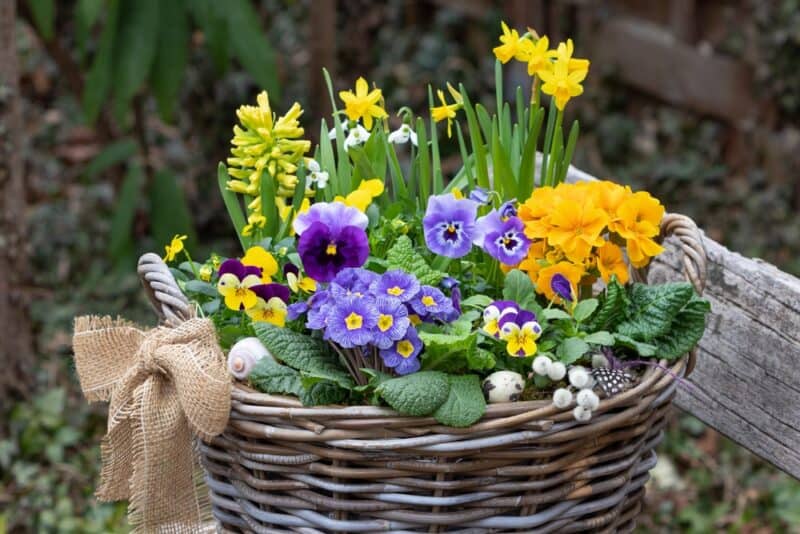
Think woodland all the way.
- Bluebells
- Violets
- Ferns
- Astilbe
In containers, pair primrose with:
- Cyclamin
- Campanula
- Variegated Ivy
- Mother fern
Problems and Solutions for Growing Primrose
While these plants are attacked by a number of different pests and pathogens, they’re generally healthy unless you place them in the wrong environment. Here are the things that you might encounter:
Vine Weevils
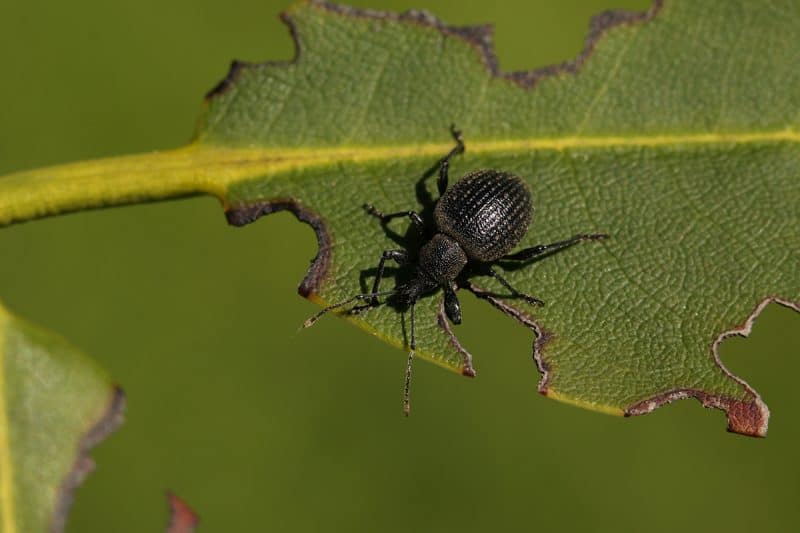
Otiorhynchus sulcatus is probably the most destructive of all primula pests because it can cause the plant to weaken and rapidly die. The grubs of the weevil are white with a brown head. They are soil dwellers that attack the roots of the plant.
The adult is black and looks like a small beetle. The adult appears around fall and eats the edges of leaves. Sometimes, all it takes is gravel or pebbles around the primrose to prevent them from laying eggs in the soil.
Trap the adults by stuffing flowerpots with grass and placing them around the primrose garden. Check the pots daily and destroy any captured adults.
If your primula dies suddenly, and you think it is the vine weevil, remove the plant and dispose of it in the garbage, not the compost. You may need to treat or remove the soil.
Snails and Slugs
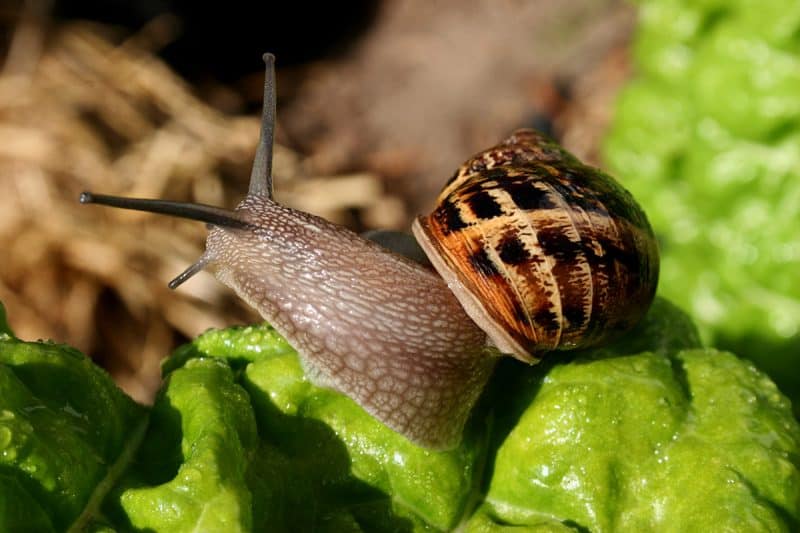
Given the cool, shady environment, slugs and snails can cause issues because they like to live there. Visit our guide to snails and slugs for tips.
Botrytis
This can be bad in the summer after a long period of rain in the summer heat and humidity. Botrytis cinerea causes flowers to wilt and die, or buds to fail to open.
The flower petals start with browning edges, and you will also see brown lesions on the stems. Gray mold is usually present, especially in the latter stages of the infection.
Prevention is critical because healthy plants are less susceptible to botrytis.
Keep the airflow up by sufficient spacing between plants and clean garden tools after use. Remove any plants you think have been affected. Mycostop is a biofungicide that contains beneficial bacteria to stop botrytis. Grab some at Amazon.
Aphids
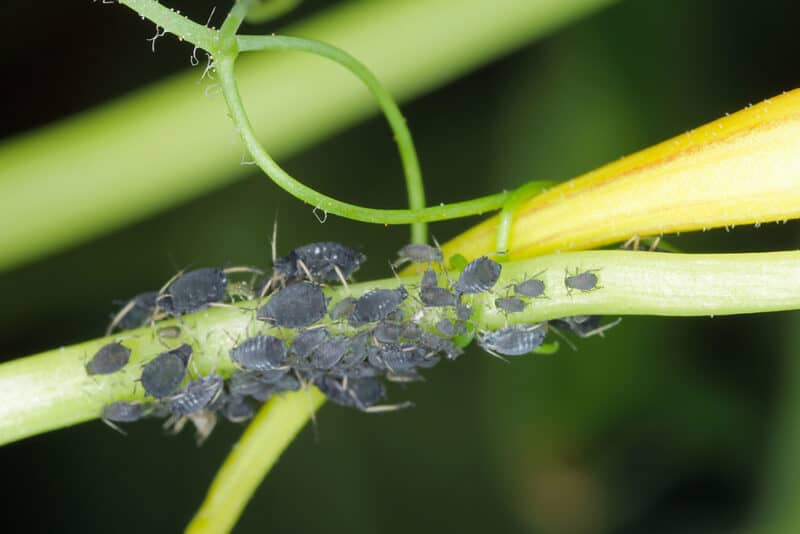
Cowpea (Aphis craccivora) and green peach aphids (Myzus persicae) are serious pests of primroses. Cowpea aphids may inject a toxin into the primrose when feeding, causing the plant to die.
Read our in-depth article here on how to identify and control aphids on garden plants.
Caterpillars
Suspect caterpillars if the leaves have been eaten from the edge toward the center. Black cutworms (Agrotis ipsilon) and beet armyworms (Spodoptera exigua) are both partial to primrose.
Handpick them off or control caterpillars with Bacillus thuringiensis.
Mealybugs
Mealybugs feed on the sap of primrose and leave cottony masses everywhere. Once established, they usually grow in number quickly and can cause other issues with further diseases. Visit our guide to learn how to deal with them.
Leafminers
The larvae of leafminers tunnel their way through the primrose leaves, leaving trails and marks on the foliage. Although cosmetic, large infestation can cause primula to wilt and die, and it leaves them exposed to diseases.
Getting to the larvae is difficult because they hide inside the plant. Remove any affected leaves and destroy them. You should also keep weeds out of the garden because they act as hosts.
You can also use a spinosad spray to kill the adults and larvae.
Spider Mites
Two-spotted spider mites look like little black dots on the undersides of leaves. They are small, so you don’t often see them until the damage they’ve caused is noticeable.
You will see stippling of leaves and webs in the areas where they are feeding.
Visit our guide to learn about controlling this common garden pest.
